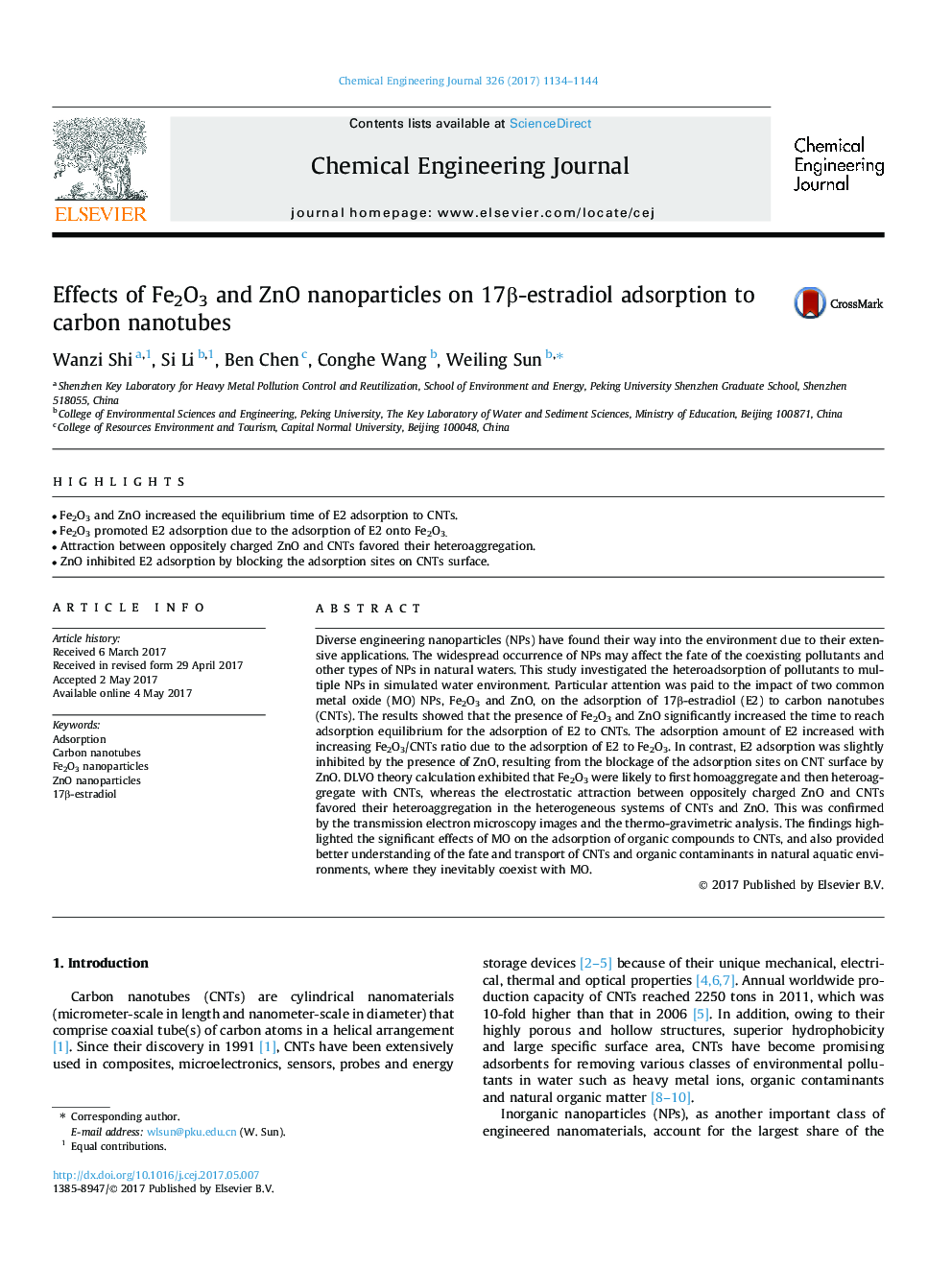| Article ID | Journal | Published Year | Pages | File Type |
|---|---|---|---|---|
| 6465547 | Chemical Engineering Journal | 2017 | 11 Pages |
â¢Fe2O3 and ZnO increased the equilibrium time of E2 adsorption to CNTs.â¢Fe2O3 promoted E2 adsorption due to the adsorption of E2 onto Fe2O3.â¢Attraction between oppositely charged ZnO and CNTs favored their heteroaggregation.â¢ZnO inhibited E2 adsorption by blocking the adsorption sites on CNTs surface.
Diverse engineering nanoparticles (NPs) have found their way into the environment due to their extensive applications. The widespread occurrence of NPs may affect the fate of the coexisting pollutants and other types of NPs in natural waters. This study investigated the heteroadsorption of pollutants to multiple NPs in simulated water environment. Particular attention was paid to the impact of two common metal oxide (MO) NPs, Fe2O3 and ZnO, on the adsorption of 17β-estradiol (E2) to carbon nanotubes (CNTs). The results showed that the presence of Fe2O3 and ZnO significantly increased the time to reach adsorption equilibrium for the adsorption of E2 to CNTs. The adsorption amount of E2 increased with increasing Fe2O3/CNTs ratio due to the adsorption of E2 to Fe2O3. In contrast, E2 adsorption was slightly inhibited by the presence of ZnO, resulting from the blockage of the adsorption sites on CNT surface by ZnO. DLVO theory calculation exhibited that Fe2O3 were likely to first homoaggregate and then heteroaggregate with CNTs, whereas the electrostatic attraction between oppositely charged ZnO and CNTs favored their heteroaggregation in the heterogeneous systems of CNTs and ZnO. This was confirmed by the transmission electron microscopy images and the thermo-gravimetric analysis. The findings highlighted the significant effects of MO on the adsorption of organic compounds to CNTs, and also provided better understanding of the fate and transport of CNTs and organic contaminants in natural aquatic environments, where they inevitably coexist with MO.
